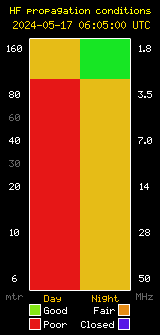Youth-Focused Activities, Earthquake Commemoration, Historic Reenactment, and Public Demonstrations Highlight 2025 Field Day The Santa Barbara Amateur Radio Club invites people of all ages to participate in the nationwide 2025 Amateur Radio Field Day at Chase Palm Park June 28-29. (photo: Jim Smart) June 23, 2025 – SANTA BARBARA, Calif. When cell towers fail and internet connections go silent, one form of communication continues to deliver: amateur radio. Each year, the Santa Barbara Amateur Radio Club (SBARC) joins thousands of operators across North America to demonstrate this essential technology during the nationwide: Amateur Radio Field Day June 28–29 at Chase Palm Park. Field Day is the most anticipated event on the amateur radio calendar—a 24-hour emergency communication exercise that mixes public service, technical skills, and community outreach. Now in its 92nd year, Field Day reminds us that when all else fails, amateur radio still works. New for 2025, SBARC will also be activating a special radio station on State Street as part of the City of Santa Barbara’s centennial reenactment of the 1925 earthquake. The station will showcase how amateur radio can provide critical communication in disaster scenarios when modern infrastructure is compromised. We will be located on State Street between Amapamu Street and Figueroa Street. A map showing our location (and others) is shown below. (Click to enlarge) At the Chase Palm Park Field Day site, SBARC will operate three High Frequency (HF) stations, powered entirely by emergency generators. The public is encouraged to drop by, ask questions, and learn how these stations connect with others across the globe—entirely off-grid. Licensed amateur radio operators are invited to operate under the club’s call sign, within the privileges of their license. This year, young people are especially encouraged to attend. In 2024, more than 20 local children and teens participated in Field Day, sparking curiosity and even helping scouts fulfill requirements for their Radio Merit Badge. With hands-on demonstrations and real-world communication scenarios, Field Day is a perfect introduction to the world of radio for all ages. SBARC has served Santa Barbara since 1920, fostering public service, technical experimentation, and emergency preparedness. The club maintains a robust network of repeaters, remote stations, and trained operators dedicated to community resilience. 📍 Join us at Chase Palm Park from Saturday, June 28 at 11:00 AM through Sunday, June 29 at 11:00 AM. Activities will be ongoing throughout the day and night. 📡 Learn more:… Continue reading →









